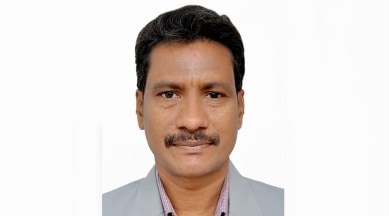Stay updated with the latest - Click here to follow us on Instagram
Tests for sickle cell anaemia must be mandatory during pregnancy: Gautam Dongre
About 1 in 86 births among Scheduled Tribe (ST) population have SCA, the prevalence being higher in central, western and southern India. Maharashtra has the second highest number of SCA cases after Gujarat, but lacks basic health amenities.

On February 1, Finance Minister Nirmala Sitharaman in the Union Budget 2023-24 announced mission mode to eliminate sickle cell anemia (SCA) by 2047. About 1 in 86 births among Scheduled Tribe (ST) population have SCA, the prevalence being higher in central, western and southern India. Maharashtra has the second highest number of SCA cases after Gujarat, but lacks basic health amenities. The Indian Express spoke with Nagpur-based Gautam Dongre, secretary of National Alliance of Sickle Cell Organisations (NASCO) and board member of Global Alliance of Sickle Cell Disease Organization (GASCDO). Dongre, who is also a father to two children living with the disease, highlighted several gaps in the healthcare system that makes the target questionable.
Why has the Centre suddenly focussed on eliminating SCA, which has always been considered a neglected disease?
Due to lack of initiative and sensitisation, every year around 50,000 babies are born with SCA, which without intervention now, will keep increasing. In the long run, this will not only impact the health system but also become an economic burden for the government. Also, SCA occurs due to an abnormality in the oxygen-carrying protein haemoglobin found in red blood cells which become rigid with a sickle-like shape under certain circumstances. The problems begin as early as the age of five-six months. So by the time they turn adults, many develop deformities and become physically challenged. This will further add to the disabled population in India.
Does India have data of the total number of patients who die of SCA every year?
There is no such data available with the government. We even tried to procure data from Maharashtra but in vain. SCA can lead to many clinical complications, but as it is most common in tribal areas where medical officers are not trained, they attribute death to symptomatic ailments. For instance, if a person who for years has been suffering from SCA and died because of an associated stroke, which is quite common among patients, the doctor will write stroke as the cause of death.
What are the main challenges and gaps the government needs to address to meet the target of 2047?
There are two ways to divide the challenges—immediate and long-term. Under the first, the government must focus on providing life-saving medicines to patients. A medicine called Hydroxyurea, despite costing just Rs 2-3, is not available at taluka-levels, and the poor tribals travel for many kilometres to procure it from district hospitals.
On several occasions, we have seen that because Hydroxyurea is also used to treat cancer patients, untrained doctors hesitate to prescribe it to patients. This not only a violation of human rights but also leaves patients in pain—many of whom die… People commonly perceive it to be a community-based disease, but it is not limited to the close-knit tribal population. Marriage counselling in areas with high incidences of SCA should be considered.
Do patients with SCA get benefits of disability certificates?
In our 2021 survey, we found that in eight states including Maharashtra, 84 percent of the total interviewed patients knew that it’s a disability, but less than 41 percent had disability certificates. This is despite the fact that SCA has been categorised by Ministry of Social Justice and Empowerment as a disability due to blood disorder. The government has also made the procurement of ‘Unique ID for Persons with Disabilities’ very stringent…